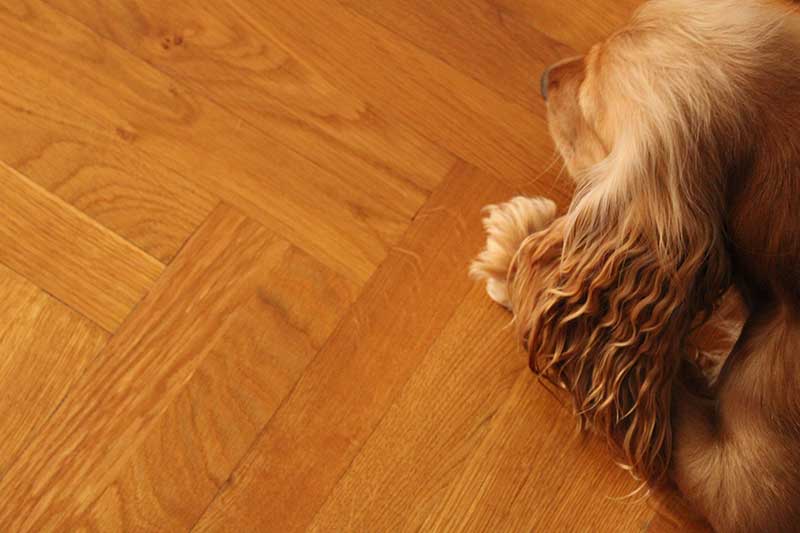
No one likes something new, scary, or uncertain. Dogs are no different than the rest of us when it comes this mindset. It can, however, make for some frustrating situations when we fail to view the world from our pet’s perspective.
Whether you have an animal who won’t go outside in the wet grass, is terrified of your linoleum, or avoids your living room rug like the plague, surface aversions in dogs can be frustrating. Schertz Animal Hospital is happy to help you understand and navigate them a little better, though.
Why Surface Aversions in Dogs Happen
When it comes to surface aversions in dogs, understanding why they happen is half the battle. Although it might not be apparent to you, there is usually a reason why Fluffy is suddenly scared to go down the steps on the deck or enter the foyer.
Consider a few possibilities:
- Something happened in that location previously that was painful or scary- whether it was a thunderclap or a incidence where the pet slipped, those experiences can stick with them.
- Your pet is scared of something. Put yourself down at your dog’s level and try to discern whether something might be intimidating. Is there a strange noise? Is the area too hot, cold, or uncomfortable in some other way?
- Your pet is unable to navigate due to a change in health status. Decrease in vision or depth perception can make stairs tricky, while orthopedic disease can make slippery surfaces even more difficult. This is particularly common in senior pets.
- It’s a new experience. We are all scared of change. For a rescue dog who has never walked on grass, a pet who has never crossed a bridge, or a dog from Texas who needs to navigate the snow, caution on a new surface is totally normal.
Many times getting to the root of the aversion lends clues as to how to get through it.
Navigating the Issue
Once you have an idea what is at the heart of your pet’s fear of a surface, you can get started working on it. If you can’t quite figure out what the problem is, give us a call so that we can examine your pet and be sure that there are no health issues involved.
Remove anything potentially frightening or offensive from the area so that your pet is comfortable. You should also consider making changes that make the surface easier to navigate. This may mean more clearly marking the edges of steps to aid in depth perception, improving traction with throw rugs or yoga mats, and trimming your pets nails and long hair on the paws to prevent slipping.
Once you are sure that there are no physical reasons that your pet is avoiding a surface, you can get started with training.
Positive reinforcement is the best bet when it comes to teaching a pet that there is nothing to fear. Start by rewarding your pet for going near the area. Use praise or a valuable treat or toy in order to start teaching your pet that the averse area has good things to offer. Clicker training is a great way to work on this association as well.
As soon as you have built up a positive association with going near the area, you can begin to up the ante. Encourage your pet to move slowly and carefully into the area. You may toss treats or reward advancements, such as a step in the right direction, if your dog is less willing. Rushing your pet will only increase their anxiety; patience is key!
Most times surface aversions in dogs exist for a good reason, at least in the canine world. By using a little understanding and effort, though, most can be overcome. Please don’t hesitate to contact your team at Schertz for more information.
Recent Posts
About Us
We know that choosing the right veterinarian for your pet (and you) can be a challenge. Yet, with our stress-free handling, our long-term, experienced staff, and a state-of-the-art facility, we make the decision an easy one!
